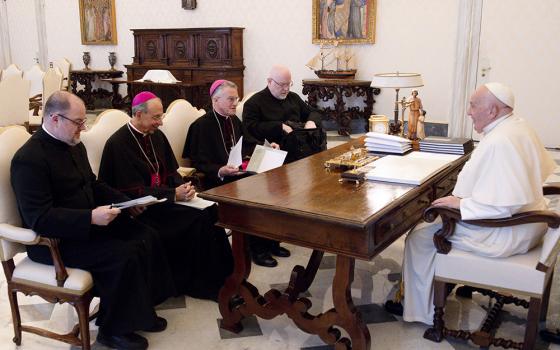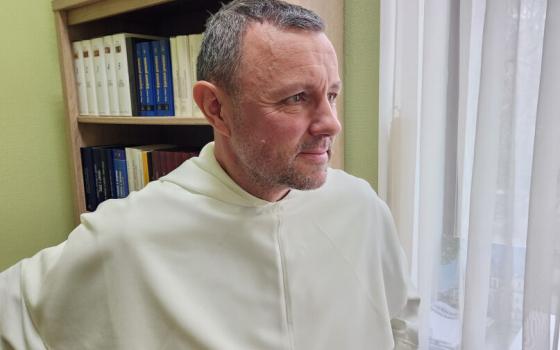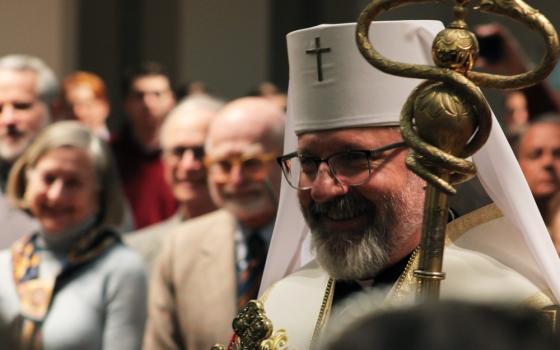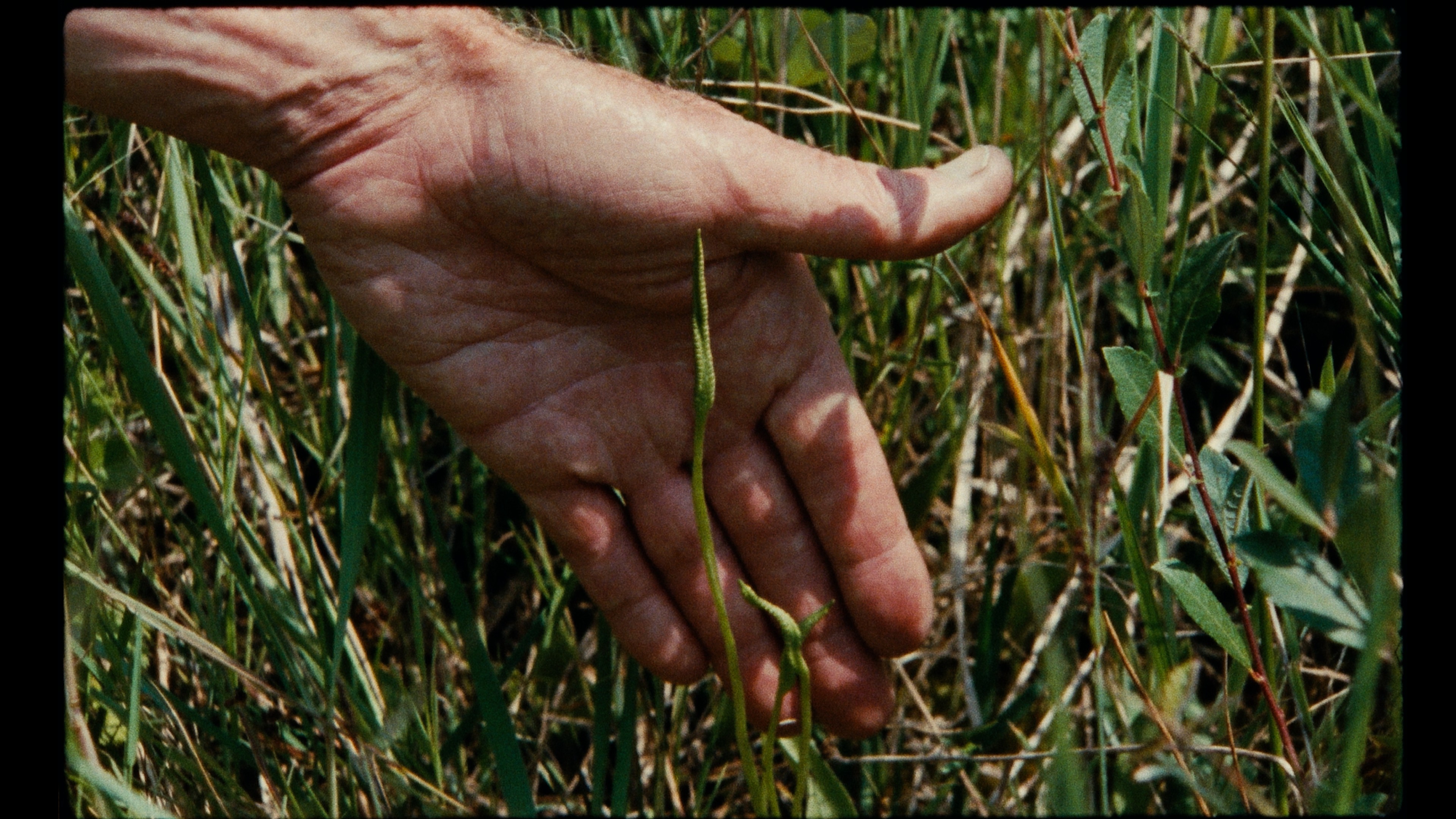
An image of Ophioglossum from the French documentary 7 Walks with Mark Brown. (Courtesy of Several Futures)
Amidst the constant cacophony of the news cycle and a thousand new crises erupting daily, how do you make a case for the environment? I’ve been pondering this since last fall when I saw the intriguing French documentary 7 Walks with Mark Brown at the New York Film Festival. Filmed by Pierre Creton and Vincent Barré, 7 Walks follows paleobotanist Mark Brown and a small film group undertaking seven hikes across different parts of Normandy, where Brown shows them astonishingly ancient plants.
Before the film began, I expected it to unfold with revelations of great beauty, a standard and compelling environmentalist approach. A couple of years ago in a London bookshop, I stumbled upon Secrets of a Devon Wood by Jo Brown. A replica of Brown's Moleskine journal, the book contains sketches done by Brown of different flora and fauna in the Devon Wood. Using what looks like ink and colored pencil, her work has a tremendous immediacy; the plants and animals practically leap off the page. The sketches naturally draw you to a great sense of wonder.
The great environmental artist Angela Manno, whom I’ve written about previously, similarly uses art to generate awareness of the preciousness of our world’s flora and fauna and a desire to protect that life. Using the icon format of the Byzantine Church, Manno creates extraordinary icons of threatened and endangered plant and animal species. Looking at a Manno icon of a honey bee or a Brown sketch of a robin, it's clear how much the world — as Gerard Manley Hopkins put it — "is filled with the grandeur of God."
But Manno also paints icons of creatures that are not so readily affecting, either because we cannot easily attribute human emotions to them or because they aren't that pretty. The star cactus is no honey bee. The pangolin is no candy darter. I suspect many quickly pass over these images as I have because they're harder to identify with. I'd rather stare into the sad-seeming eyes of an Andean marsupial frog.
But where Manno gives us options, Creton, Barré and Brown spend the first half of 7 Walks refusing to show viewers anything that might generate a sense of awe or emotion. Instead, we watch Brown and the film team walk through what seems like ordinary terrain. At times, Brown stops and points something out, and the crew gasps and marvels and talks about how incredible it is. However, all viewers are allowed to see are their reactions, standing in what appear to be unremarkable fields.
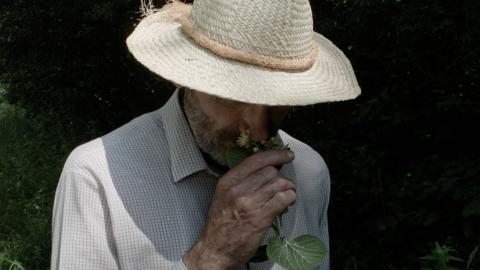
An image of paleobotanist Mark Brown from the French documentary 7 Walks with Mark Brown. (Courtesy of Several Futures)
Brown has a kind of Mr. Rogers quality, an endearingly vulnerable generosity of spirit. And Creton and Barré give the film a quiet, patiently meditative quality. But as Brown and the crew break down in tears at the end of the seventh walk, standing in yet another field that we are told contains the oldest form of plantlife on Earth but looks like, well, grass, I felt like I was in a Wes Anderson movie. Is this a joke? I wondered. What is going on here?
Then, suddenly, in the second half of the movie, without warning, Creton and Barré take us back through Brown's walks. And this time, viewers only see the plants to which we had watched the group react. Brown shares a few details off-camera here and there, but we mostly stare at close-ups of the plants in silence.
Some are dazzlingly beautiful — a pink flowering bramble with little beetles climbing on it that Brown confides self-germinates, meaning "every time it's like another species is born"; the bee orchid, which looks a bit like a bee and gives off a pheromone like a female bee's so males will come and pollinate it; a field of poppies — but not all. Some are downright unenticing like the plant we're told smells like a goat. (Yikes.)
But I found myself unexpectedly moved by them all. And with that realization, the subtle genius of Creton and Barré's approach became clear. Rather than a poorly conceived introduction, the first half of the film is there to teach us how to appreciate what we see in the second half. It provides us with information, both the stories that Brown shares of the plants and how the group reacts to them. It also gives viewers time to settle in and get used to being in this unusual type of story and space.
In a way, that first half has a gardener's quality — breaking up the rocky soil within us, tilling the fields of our imaginations so that something new and strange can be planted there. When eventually we are shown the plants up close, we are ready to see them.
I appreciate the choice of environmentalists to use the prettiest landscapes and the cutest, most vulnerable animals to try and get people to adopt a more environmental consciousness. The immediacy and emotionality of such images is undeniable. But I will tell you that I left 7 Walks looking at the most ordinary parts of the world around me with a whole new level of curiosity and wonder, precisely the kind that Manno, Brown and others want to generate in us.
In truth, the whole world is charged with the grandeur of God, not just the parts that stand out or look nice. What truly makes creation so precious is that with a little information and open senses, we can discover in our backyards, parks and even abandoned lots, life so incredibly extraordinary it makes you gasp and cry.
Advertisement


